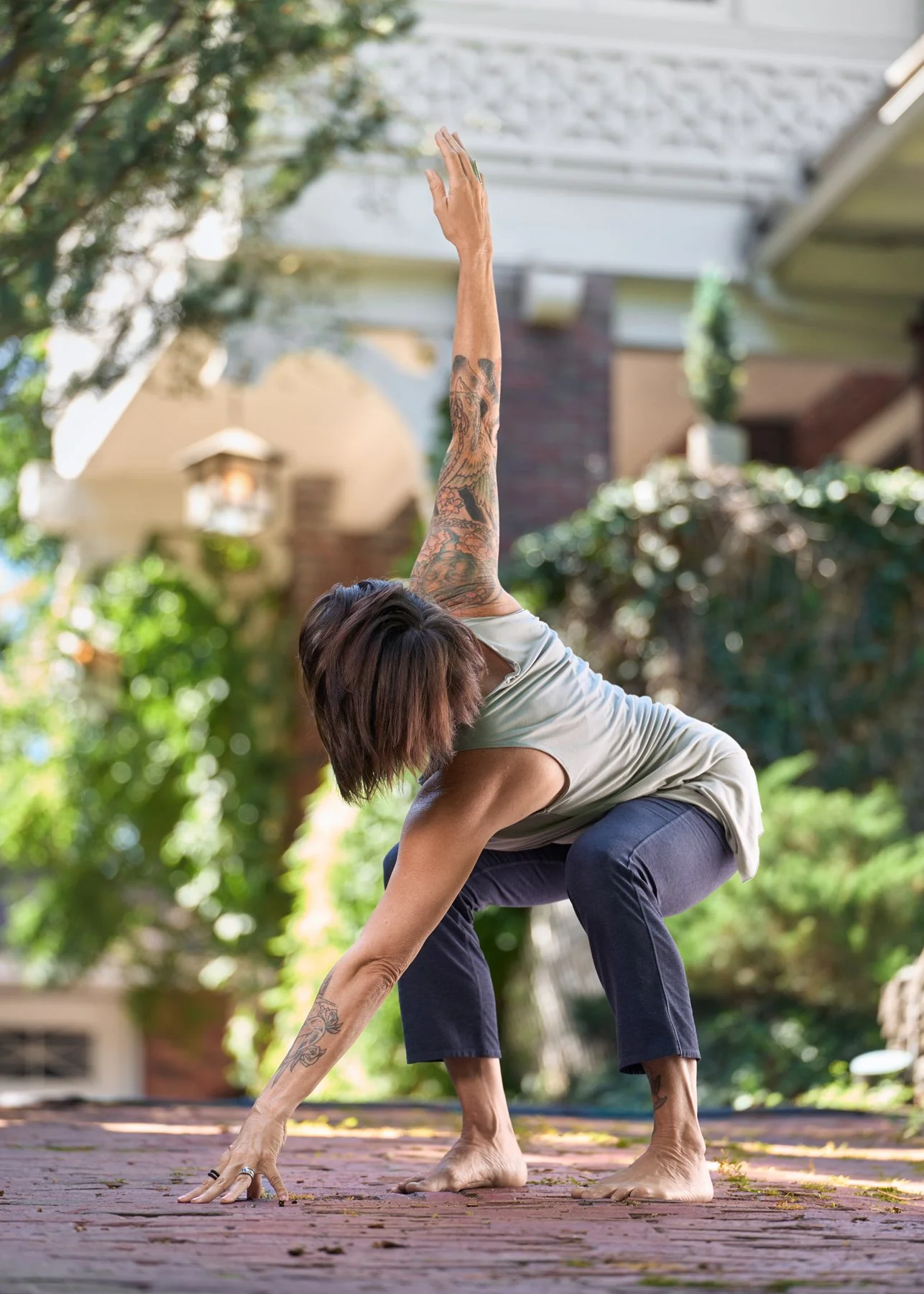Why You Might Be Collapsing Into Your Dominant Side
In somatic language, we sometimes say a person is collapsing into their dominant side. This phrase is not meant to only be postural— it’s also perceptual. It refers to the tangible bodily patterns at the root of overuse injuries and wear and tear. And it also means living too much from your doing side, and not enough from your seeing, feeling, or receiving side.
Most people are right-handed, and even those who aren't, we all live in a right-handed culture. Doors, tools, desks, sports, and even gestures of politeness all assume right-side leadership. Over time, this creates a global pattern: the right side pulls forward and down, the ribs rotate left, and the spine compensates. This is what we call dominant side collapse. In physical therapy, this can be called functional asymmetry, muscle imbalance, and postural deviation, and it can be understood as relating to shoulder impingement, scoliosis patterns, pelvic obliquity, gait imbalances, and thoracic rotation.
When I was studying Hanna Somatics, there was a big emphasis on the importance of contralateral patterns— the ability to coordinate opposite sides of the body with intelligence and integration. Many of the Hanna Somatic exercises, therefore, slowly rearticulate contralateral movement patterns throughout the body as a way of neurological rehabilitation. They are designed to reverse the issues caused by dominant side collapse.
When I started studying Katonah yoga, this same emphasis emerged. In the Katonah material, we talk about cross-referencing. And that when we lose our cross-referencing, we fall into compensation and distortion. To re-establish the cross-referencing patterns is to create more volume in our body. It is to take up more space and to be more embodied.
Because most of us are right-handed, and even when we aren’t right-handed, we live in a right-hand dominant culture, what I’ve seen is that when students turn their left side toward their right, their entire body begins to reorganize.
Their ribs lift. Their posture changes. Their face softens. They come back to center.
In Katonah Yoga, this is called the drishti of joy — left to right, yin into yang, receptivity into expression. It is related to the heart being on the left side of the body, and letting the heart sing out physically (through circulation), emotionally (through love, joy, connection), and energetically (as in opening the chest, showing up fully). The heart reaches, expresses, and emanates. The left side often holds emotion, memory, and feeling, while the right is more directive and active. The liver hones in. The liver keeps you anchored, clear, and sharp. The liver in Chinese Medicine is linked to vision (literal and figurative), planning, and right timing. It directs energy like a general— not with emotionality, but with clarity. Turning left to right is a way of integrating emotion into expression, like saying, I’m bringing my inner world into action. Otherwise, the liver, on the right, will keep us honing in. Without the balance of the heart, the global pattern of the dominant side creates mobility issues that diminish life and move us toward rigidity and a closed future.
When I was studying the Hanna work, I think it would have impacted me more if they had incorporated the psychological dimension of dominant side collapse rather than only focusing on the somatic aspect of it— not to pathologize it but to understand the truly holistic nature of bodily patterns. I didn’t realize back then the effect a global pattern could have on the trajectory of life.
Your body isn’t meant to be symmetrical, but it is meant to be integrated.
And integration is what makes movement feel like freedom again in more ways than one.

